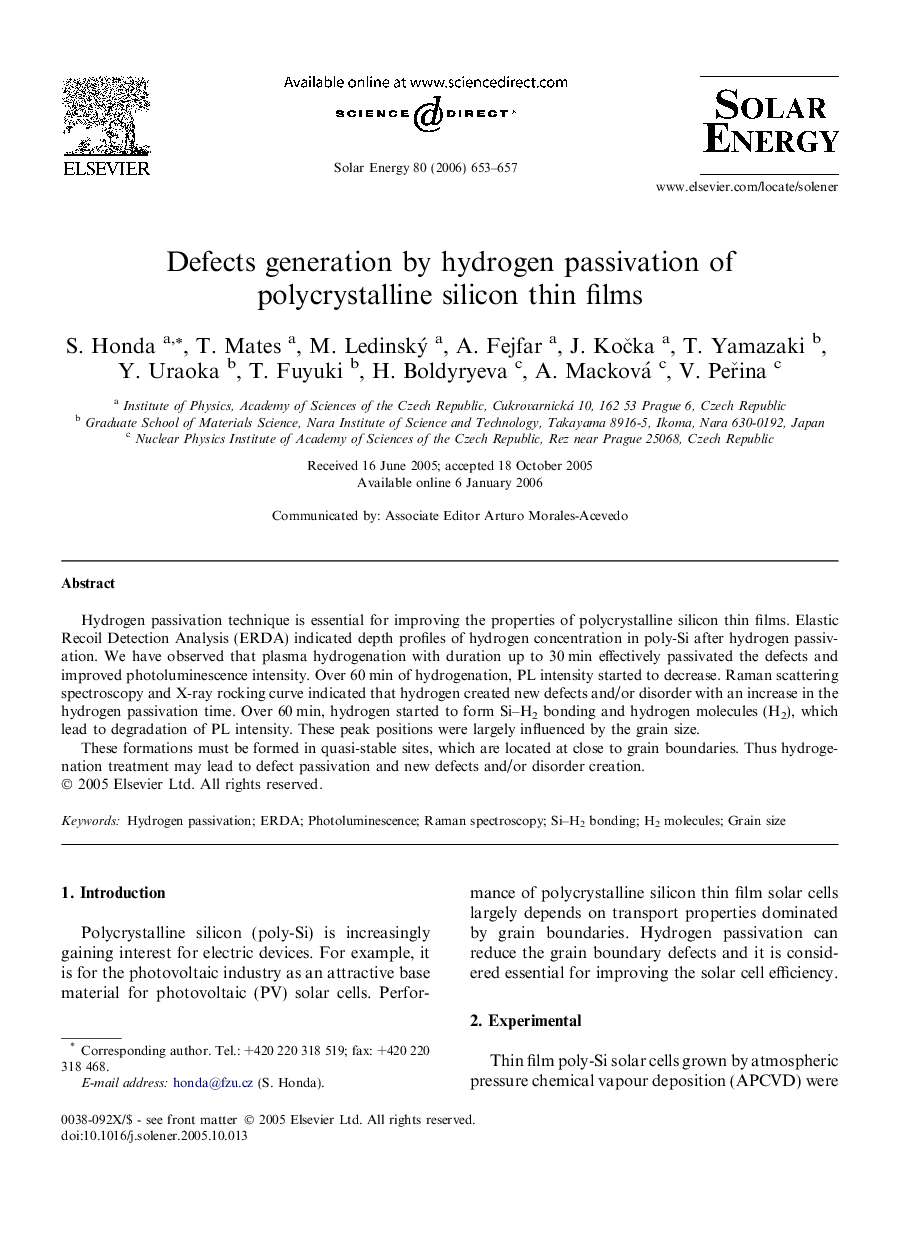| Article ID | Journal | Published Year | Pages | File Type |
|---|---|---|---|---|
| 1552349 | Solar Energy | 2006 | 5 Pages |
Hydrogen passivation technique is essential for improving the properties of polycrystalline silicon thin films. Elastic Recoil Detection Analysis (ERDA) indicated depth profiles of hydrogen concentration in poly-Si after hydrogen passivation. We have observed that plasma hydrogenation with duration up to 30 min effectively passivated the defects and improved photoluminescence intensity. Over 60 min of hydrogenation, PL intensity started to decrease. Raman scattering spectroscopy and X-ray rocking curve indicated that hydrogen created new defects and/or disorder with an increase in the hydrogen passivation time. Over 60 min, hydrogen started to form Si–H2 bonding and hydrogen molecules (H2), which lead to degradation of PL intensity. These peak positions were largely influenced by the grain size.These formations must be formed in quasi-stable sites, which are located at close to grain boundaries. Thus hydrogenation treatment may lead to defect passivation and new defects and/or disorder creation.
